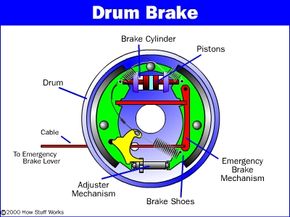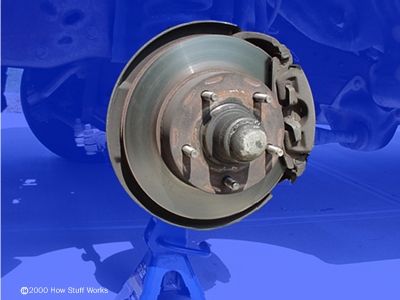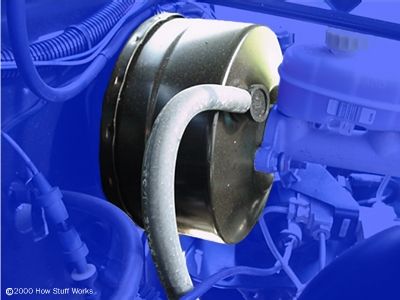The Drum Brake
The drum brake may look complicated, and it can be pretty intimidating when you open one up. Let's break it down and explain what each piece does.
Like the disc brake, the drum brake has two brake shoes and a piston. But the drum brake also has an adjuster mechanism, an emergency brake mechanism and lots of springs.
Advertisement
First, the basics:
When you hit the brake pedal, the piston pushes the brake shoes against the drum. That's pretty straightforward, but why do we need all of those springs?
This is where it gets a little more complicated. Many drum brakes are self-actuating. As the brake shoes contact the drum, there is a kind of wedging action, which has the effect of pressing the shoes into the drum with more force.
The extra braking force provided by the wedging action allows drum brakes to use a smaller piston than disc brakes. But, because of the wedging action, the shoes must be pulled away from the drum when the brakes are released. This is the reason for some of the springs. Other springs help hold the brake shoes in place and return the adjuster arm after it actuates.



